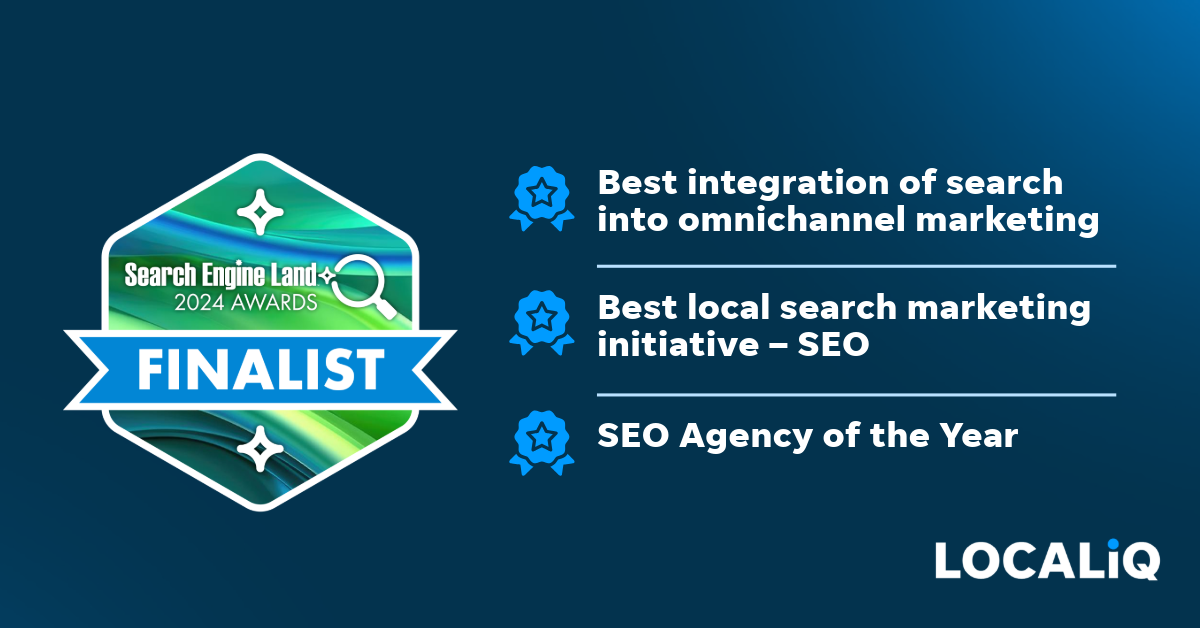It might be difficult to market your care home, especially if you haven’t done so before. There are, however, some fundamental marketing actions you can do to ensure your care facility is appropriately advertised. Here are a few easy-to-implement strategies for promoting your care home and reaching your target demographic to get you started.
Search engine optimisation
Search Engine Optimisation (SEO) is the process of using a variety of methods to help improve your website’s visibility online. There are a few things you need to consider when trying to implement SEO and it’s not a one-time thing, your website needs ongoing SEO maintenance to keep it in order, which is often forgotten. What position do you hold in the search engine rankings for key search phrases for local care homes? Can people find you for aged care, residential care, nursing, dementia, or any other type of assistant you provide? Are these words built into your website’s metadata, as well as in page headings and text? Have you optimised your blog and news pieces – something we frequently see overlooked in the drive to get information online?
Know your audience
Knowing your target audience is the most critical step for marketing a care home. When you advertise your care home, you are more likely to target the resident’s family and friends rather than the resident themselves. This could be because the prospective resident is no longer psychologically competent in making such decisions, for example, if they suffer from dementia. As a result, you must demonstrate to the relative or friend how you will care for your residents while preserving their independence, privacy, and dignity, and why your care home is the best option for their loved one. You might incorporate statements from relatives of current residents in your marketing materials as real-life examples to personalise and promote your care home.
Research
Once you know who you want to reach, you can figure out how to get in touch with them and market your care home effectively. If you want to increase the occupancy of your care home, you need to know what people are looking for when they are making a decision. You can see what appeals to your target audience by looking into care homes with positive reviews and high or full occupancy. When relatives are friends are making judgements, they consider variables such as location, setting and facilities, specialised care options, and price, so make sure you promote your care home’s information to demonstrate why you are the best choice. You may utilise Google to find the top results for care homes if you only want to raise awareness of your facility. You may see what is desired and adjust it to your care setting by researching and taking inspiration from these popular websites. These care homes will also have something that sets them apart from other care settings, which brings us to our next point: your unique selling point.
Unique selling point
You may now understand what makes your care home special and stand out as a place where relatives and friends wish their family to reside after investigating what other care homes have. This is your unique selling point, and it should be promoted to set your care home apart from the competition. If your care home offers specialised care, specific activities for residents, or is located near the countryside or the coast, these are all distinct selling advantages that will entice relatives to choose your care setting.
Online presence
You will need a good website and online presence to showcase your unique selling point and compete with other care homes in your area. You can market your care facility and make it easier for a family to research it by having a strong online presence. There are several approaches to building a website, including building your own, using template website design services, or using blogging platforms like WordPress. It is dependent on the task you do and your ability. The most significant aspect of your website is that you can easily change it to show off your professionalism and provide up-to-date information about your care home. You should cover information about:
- How your care home delivers the best care for residents.
- Any choices for specialised care for specific medical conditions.
- Your facilities and any activities you provide, such as having gardens for residents to walk through or flower arranging.
- How long family and friends are permitted to visit the resident, and if there are any time restrictions, such as meal breaks.
- Where you are located and if you are near the countryside or the coast.
- How to make contact with you or your care home.
- The price of your care home, as well as all the benefits you offer.
Your website should be reviewed and updated on a regular basis to ensure that all information is current and accurate, as well as include keywords that will help your website appear on Google and other search engine results pages (SERPs). To emphasise that your care setting is safe and secure for residents, provide your certification and any awards your care home has achieved. Using social media is an excellent way to promote your care home while also interacting with residents’ families and friends. You can use social media to share information about your care home, photos, and bios of your employees, and photos of your home to create a more personal connection with the residents’ families. You can continue to establish an online presence via platforms like Facebook and Twitter. Where you can add the icons and links to your website and vice versa, ensuring that everything is connected and easily navigable. Basic information about your care homes, such as location, directions, and contact information, can be included to make it super easy to find.
Website content
If you have done your keyword research, you’ll see that there are a lot of ways to reach out to your target audience by producing blogs full of relevant key phrases on topics they care about. If you specialise in dementia care, for example, you can add more information on the topic, including any research or links to related websites, as well as a link back to your service page where you provide more information about the support you provide. Consider your headings and subheadings when creating a blog – are your keywords included? Are they in various permutations in the body of the text so you can capitalise on the phrases readers will key in? It is also crucial to include images, such as infographics or a photo, to illustrate your points and break up the text with imagery.
Google ads and Facebook ads for care homes
People can learn about care homes in their region in a variety of ways. They will ask their friends for recommendations or seek medical counsel. They could also conduct a search, most likely on Google. We recommend that you start a Google AdWords campaign so that you can appear at the top of search engine results. It is not easy to set up effectively, therefore we recommend enlisting the expertise of an in-house search engine expert. Whether you are posting job adverts for care staff or joining a Facebook group, Facebook can help you reach out to your local community. However, unless you are willing to pay for it, you are unlikely to get many people to view your content, even if they have liked and followed your page. Although Facebook adverts aren’t expensive. You can either pay to boost a post or utilise the more advanced Facebook Ads Manager – if you’ve never done them before, they might be intimidating. However, if you want to target your services to a certain age group in a specific area, it can be quite effective, especially when combined with a large integrated marketing strategy.
Offline marketing material
There are alternative methods of advertising that do not require the use of the internet, I know right? You can raise awareness for your care home by using location-specific advertising by placing ads or providing brochures in community centres, doctors’ surgeries, and local businesses. While this does necessitate investing money in professional marketing materials, it is spending to save. You can demonstrate how your care facility is professional, comfortable, and friendly to residents by investing in branded and customised brochures and leaflets. You can also pay for advertisements in your local newspaper or on your local radio station to reach out to a wider audience. Alternatively, you might sponsor local events in your area. This reaches a large audience and displays your caring attitude towards other critical community problems.
Word of mouth
The final suggestion is to use word of mouth. Recommendations from friends influence any relatives and friends to choose a care home. These referrals are extremely valuable to potential residents, as these positive personal experiences with your setting reinforce your reliability. To help spread the word about your care home, you might ask family or friends to promote it to any friends who have elderly relatives and provide business cards or brochures for them to distribute.
You should be able to boost awareness, occupancy, and success of your older adult care setting by following these simple and cost-effective techniques to market your care home.
The benefits of content marketing for care homes
According to HubSpot’s research, 82% of marketers today use content marketing to generate leads and revenue. And, in an online world, it has become a critical tool for reaching out to your target audience at every point of their customer journey.
Content marketing may help residential care businesses achieve a number of objectives, including:
- Increase the number of new leads and enquiries.
- Improving your website’s search engine rankings.
- Boosting brand awareness.
- Reassuring prospects around common concerns early in the buying journey.
- Establishing your care home business as a leading expert on specific issues.
So, where should you begin? First and foremost, you must comprehend the demands and challenges of the people who will be using your care home. With this knowledge, you will be in a good position to create content that will engage prospects and drives conversions.
Bonus tip: If you use call tracking software, you can analyse your call statistics to see what questions and concerns your prospects frequently have. Make use of this information to create digital marketing content that you know will resonate with your target audience.
Five content marketing ideas for care homes
Build a care home blog
Blogging is the first (and some would say the best) digital content format. It’s a terrific method to provide your prospects and customers with bite-sized snippets of content. Whether you use a blog to keep residents’ relatives up to date on life at the care home or to generate tips-based or how-to pieces for prospective clients, your blog should be packed with relevant, useful content that visitors to your website will want to return to.
Create a listicle with your top tips
Listicles are one of the most popular kinds of online articles. They present a series of tips or essential points in a numbered list format that is easy to read (much like the blog article you are reading right now). Listicles like “5 things to remember while searching for residential care” or “10 ways to help your loved one transition to care home living” would provide a great value-add for your prospects, while also boosting your reputation as an expert in your industry.
Explain a process with a how-to guide
A well-written, concise, and thoughtfully produced how-to guide can be a great resource for a care home. Check your marketing analytics tools for frequent issues and inquiries prospects have during the buying process. Those snippets of knowledge will make great topics for how-to content. Speech analytics in call monitoring software, for example, can be used to listen in on real-world conversations with customers. Why not create an in-depth how-to guide explaining everything they need to know about residential care fees and funding if your prospects are frequently asking about it?
Get visual with video
You’re falling behind if you are not developing video content for your business these days. When it comes to a content marketing strategy for a care home, the old saying show, don’t tell should be at the forefront of your thoughts. Why? Because trust is built and earned when people can see exactly what you’re offering, in complete transparency. If you are going to invest a chunk of your budget on content marketing, creating video content demonstrating what is great about your care home and the people who work there will always be a win-win if you are going to invest money on content marketing. Read our blog post to see how you can generate more content marketing ideas.
Cultivate confidence in your brand with customer success stories
Testimonials and reviews are critical for establishing trust in your business. When customers tell you they have had a positive experience with your business, you should try to take advantage of the marketing opportunity. Using your customers’ reviews, using their own words as much as possible (with permission, of course) will help prospects perceive themselves in that positive position. It is also great for openness because nothing builds trust more than hearing the story straight from the customer.
Having a digital marketing strategy in place for your care home has never been more crucial, with prospects spending more and more time researching online. Whether they are conducting early-stage research or finalising their decision, the content you develop and distribute will be a crucial role in building trust and credibility for your care home.






